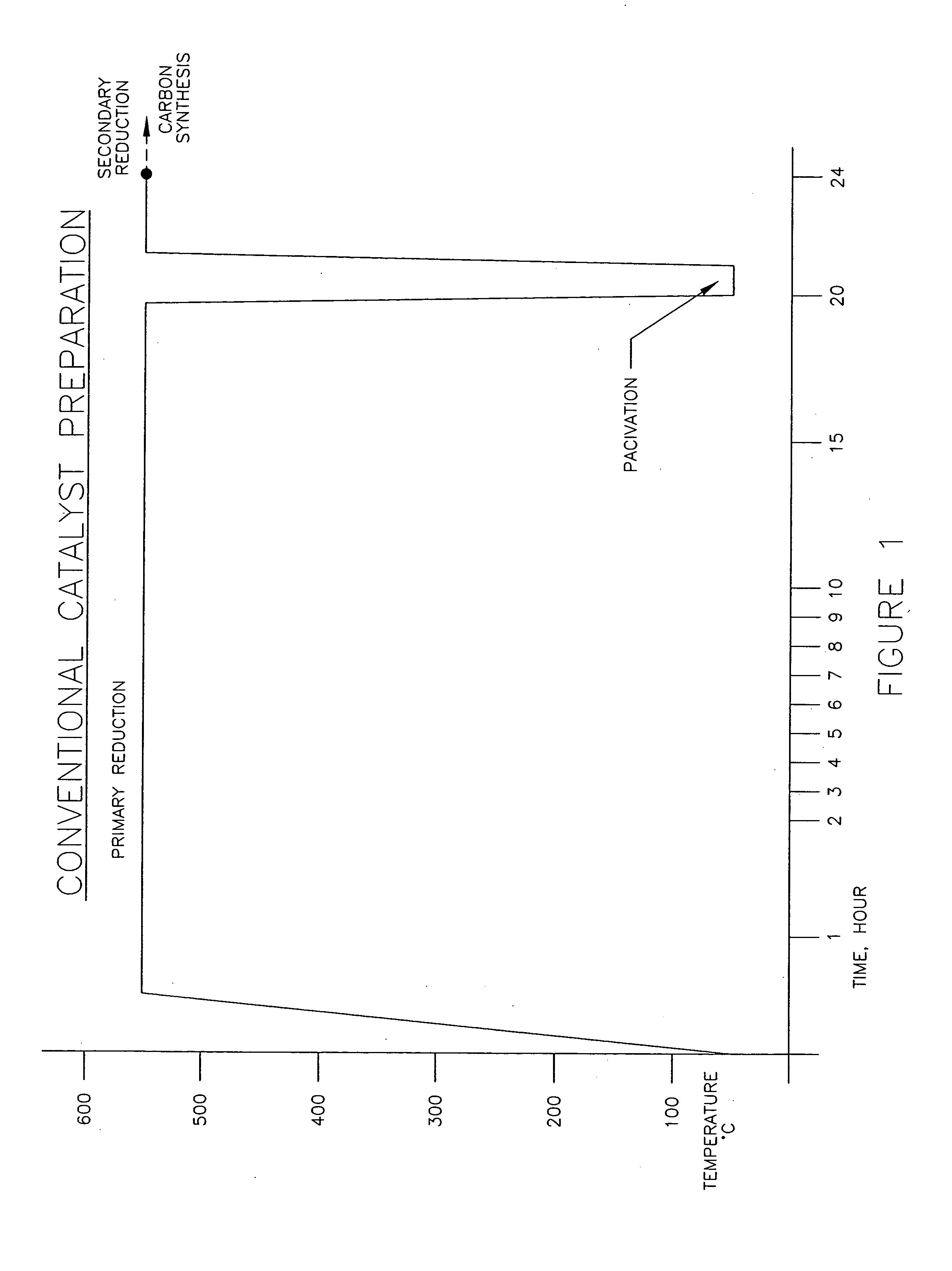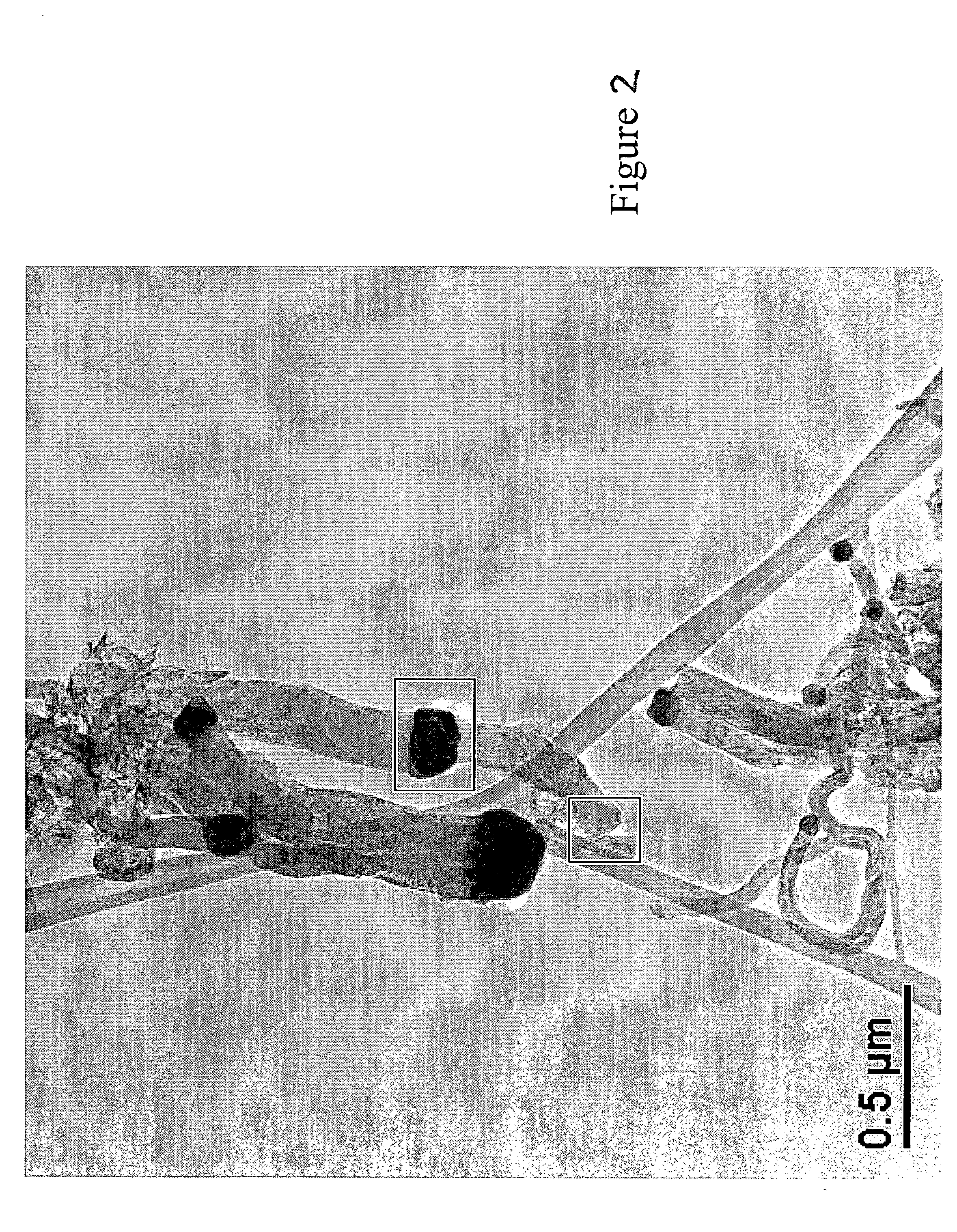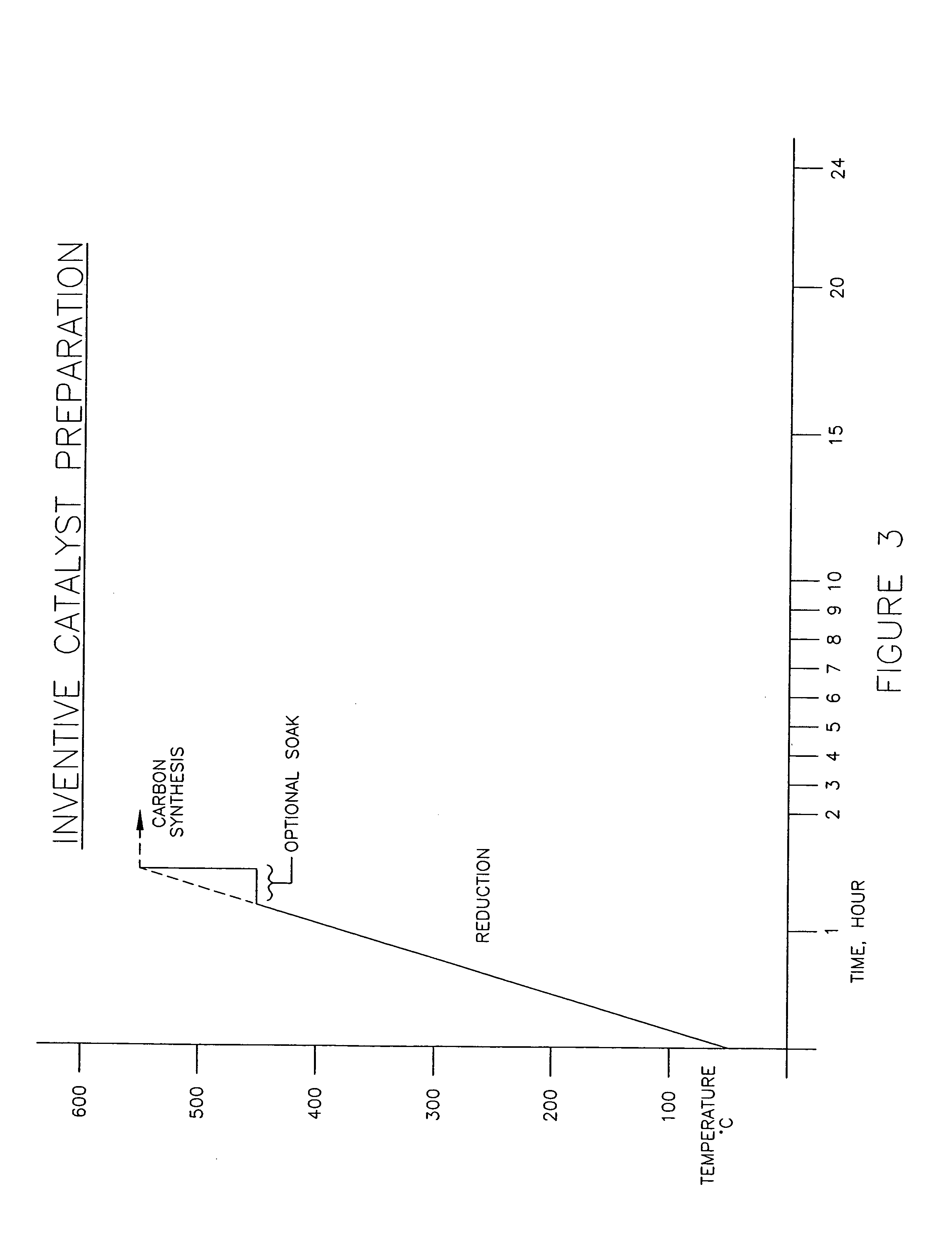Process to reduce the pre-reduction step for catalysts for nanocarbon synthesis
- Summary
- Abstract
- Description
- Claims
- Application Information
AI Technical Summary
Benefits of technology
Problems solved by technology
Method used
Image
Examples
example 1
[0027] Example 1 is the conventional prior art catalyst preparation, as shown in FIG. 1. In this example, a mixture comprising of 0.1 grams of iron and copper oxides containing 98:2 weight ratio of Fe / Cu was placed in a tubular reactor and reduced at 600° C. for 20 hours and 10% hydrogen (balance nitrogen), cooled to room temperature, passivated for one hour utilizing 2% oxygen (balance nitrogen), then reheated to 600° C. under 10% hydrogen (balance nitrogen) for two hours. A mixture of CO / H2 (1:4 by volume) was then passed thereover at a rate of 200 sccm to produce carbon nano-fibers as depicted in the transmission electron micrograph of FIG. 3. Carbon production rate was 2.40 grams carbon / grams catalyst per hour.
[0028] The present invention will be illustrated in more detail with reference to the following Example 2, which should not be construed to be limiting in scope of the present invention.
example 2
[0029] Example 2 is the preferred embodiment of the process of the present invention, as shown in FIG. 2. In this example, the catalyst preparation included a mixture comprising of 0.1 gram of iron and copper oxides containing 98:2 weight ratio of Fe / Cu was placed in a tubular reactor, heated at a rate of 5° C. per minute to 500° C. under 10% hydrogen (balance nitrogen) and held there for thirty minutes. The temperature was increased to 600° C. and a mixture of CO / H2 (1:4 by volume) was then passed thereover at a rate of 200 sccm to produce carbon nano-fibers as depicted in the transmission electron micrograph of FIG. 4. The entire catalyst preparation process takes less than two hours, and Carbon production rate was 2.56 grams of carbon per gram of catalyst per hour.
[0030] It should be noted that in both Examples 1 and 2, the carbon production rates are essentially equivalent for the two catalysts. Furthermore, the morphology of the carbons produced in Examples 1 and 2 are identic...
PUM
| Property | Measurement | Unit |
|---|---|---|
| Temperature | aaaaa | aaaaa |
| Temperature | aaaaa | aaaaa |
| Temperature | aaaaa | aaaaa |
Abstract
Description
Claims
Application Information
 Login to View More
Login to View More - R&D
- Intellectual Property
- Life Sciences
- Materials
- Tech Scout
- Unparalleled Data Quality
- Higher Quality Content
- 60% Fewer Hallucinations
Browse by: Latest US Patents, China's latest patents, Technical Efficacy Thesaurus, Application Domain, Technology Topic, Popular Technical Reports.
© 2025 PatSnap. All rights reserved.Legal|Privacy policy|Modern Slavery Act Transparency Statement|Sitemap|About US| Contact US: help@patsnap.com



